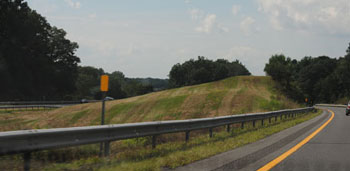by Rona Fried
As I drive between New York and Maine each summer, I look along the sides of highways, thankful for the wildflowers and native plants I see, and nauseated by the increasing presence of oriental bittersweet – which is creating walls of vines where there used to be trees. Mostly, however, there’s mowed grass.

It turns out I’m not alone in these thoughts. With pollinators in trouble, nonprofits are working with transportation departments to plant wildflowers in the medians and along the sides.
And scientists also have ideas for how to use the 5 million acres of road-side land in the US – for storing carbon.
Even without any effort, these strips of land are sequestering the amount of carbon released by 2.6 million cars each year, according the Federal Highway Administration’s Carbon Sequestration Pilot Program, which began in 2008.
While trees – which do the best job at carbon absorption – can’t be planted next to roads, there are plenty of soil management steps than can be taken, along with planting native, small shrubs, says Rob Ament, a biologist at Western Transportation Institute at Montana State University, that’s studying it. Another benefit would be reduced need for mowing, which cuts emissions and labor costs.
Under a five-year, $1 million grant from the federal Highway Authority, New Mexico is doing research along its 7,500 miles of state roads, reports Daily Climate. They’ve been able to boost carbon capture rates 35%-350% over passively managed areas. Native grasses produced the biggest gains.
And there’s potential revenue – New Mexico could earn about $1 million in carbon credits a year, and much more if the US implemented cap-and-trade.

